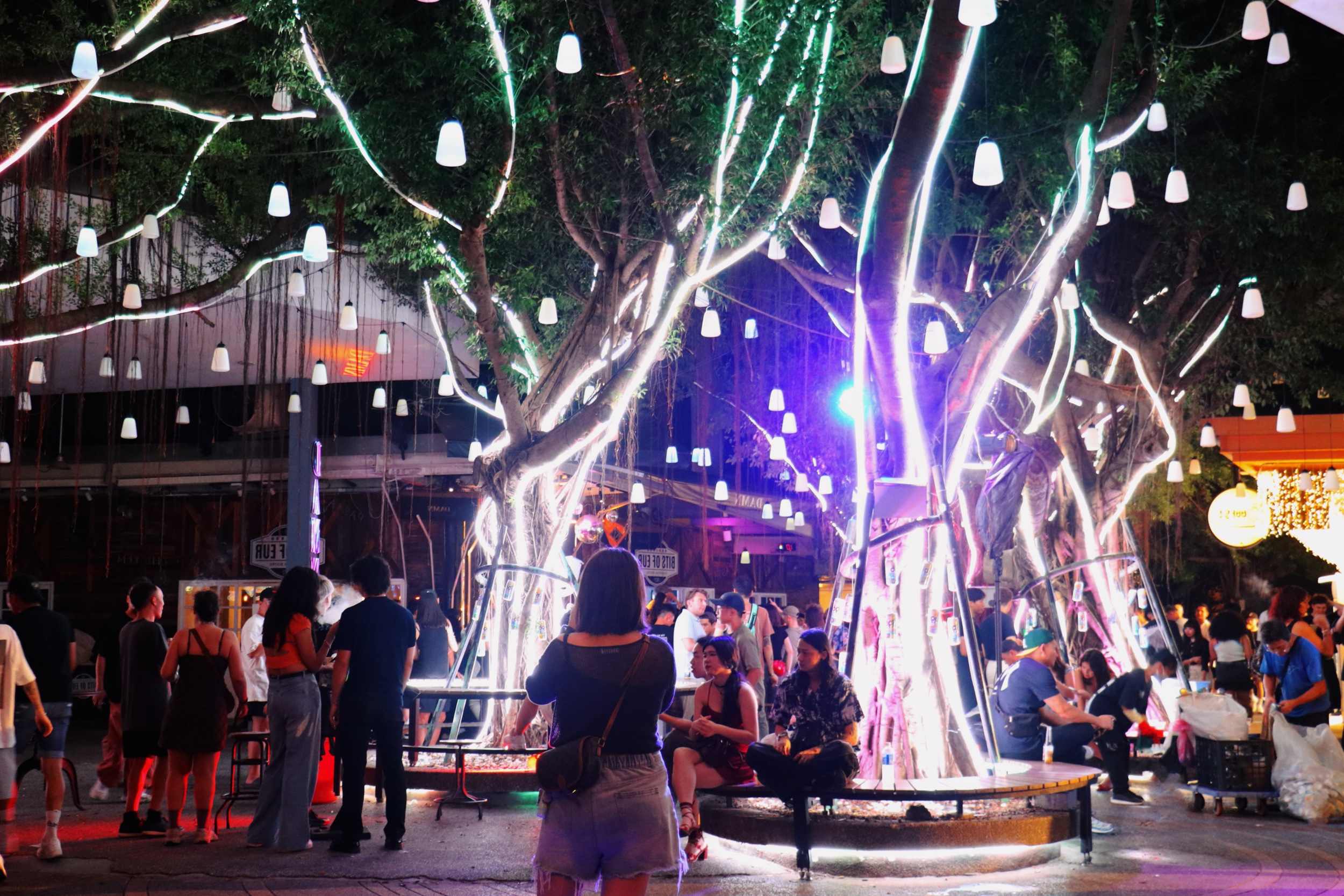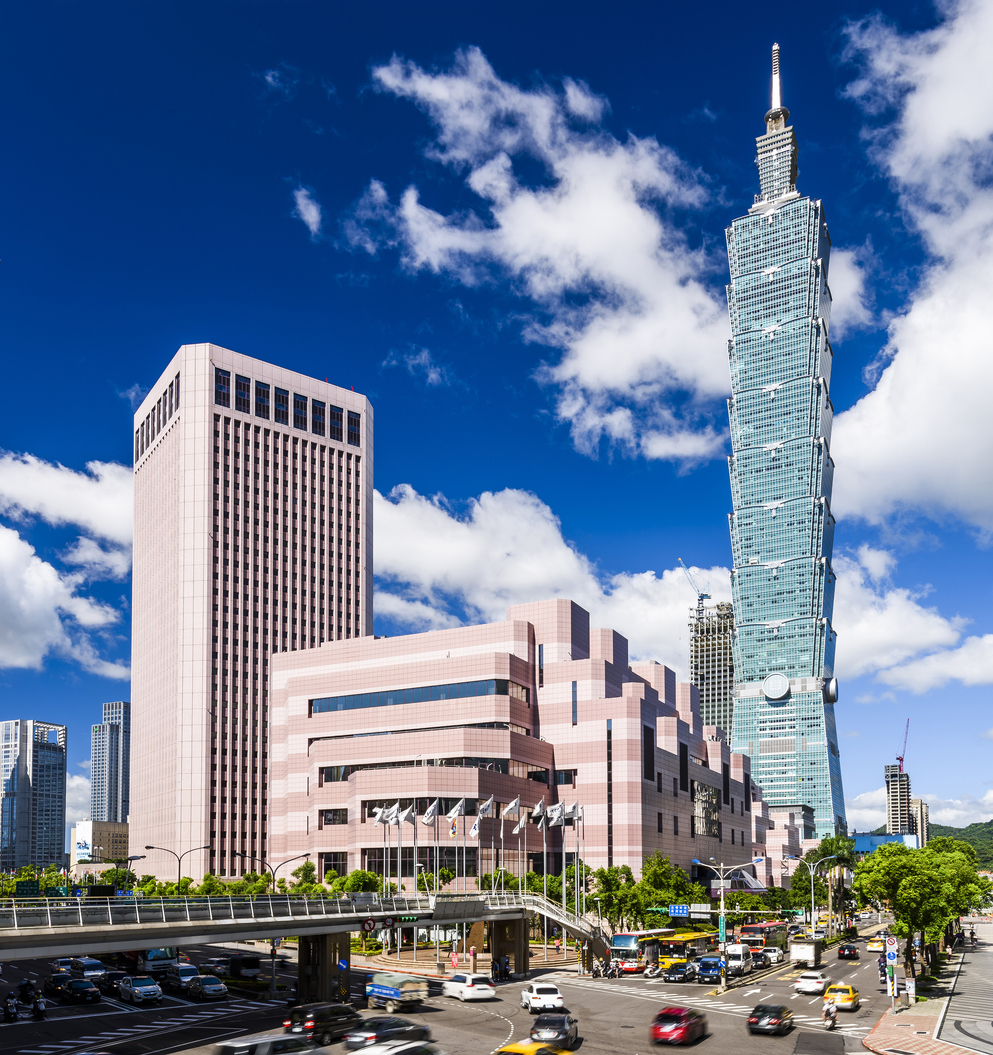TEXT Ami Barnes
PHOTOS VISION
Editor Levarcy Chen
With summer’s heat retreating and the bite of winter still far away, autumn is a great season for exploring Yangmingshan National Park. The following pages will introduce twin trails on the park’s eastern fringes — one ideal for big, blue-sky, high-energy days, the other just right for overcast conditions, or for those times when you’re in the mood for a gentle, creekside wander.

▲Qingtiangang (擎天崗) Grassland
Route 1:
Fengguikou (風櫃口)➜ Cedar Forest
Alighting at the Fengguizui (風櫃嘴)* bus stop – the third to last stop on the M1 bus route (departs from MRT Jiantan Station) – a 20min uphill jaunt brings you to the boundary between Taipei City and New Taipei City. Here, you’ll invariably find gaggles of hikers pausing in the shade of the Fengguikou Pavilion, a handy staging point for removing outer layers, catching your breath, and just generally psyching yourself up before heading any further.

▲Fengguikou Pavillion
The section of path running between here and the grasslands of Qingtiangang is known variously as the Fengguikou Trail, Mt. Ding (頂山) – Mt. Shiti Trail (石梯嶺), and (part of) Section 3 of the Taipei Grand Trail. Whatever you choose to call it, hikers are thrown in at the deep end – or rather, the steep end. Of the 6.4km route’s 370m total elevation gain, a 200m rise is frontloaded in the first kilometer. It’s a stone-step baptism of fire, but those who persevere are repaid handsomely for their sweat.

▲Cedar Forest
The first time you get a sense of these rewards comes about an hour in, when the path dips to enter a scenic stand of cedar trees. Remnants of patchily successful afforestation efforts undertaken by Japanese authorities in the 1920s, the cedar forest is, in effect, an enchanting scar, an arboreal palace entirely unlike the scenery on the rest of the trail. If you arrive on the first bus of a bright day, rays from the low sun slip in between the damp trunks, coaxing dew to rise as steam and forming backlit mossy halos. Later in the day, a clean piney scent fills the air, and a diffused light dances over the needle softened ground. It’s the perfect spot for a short break.
*The names Fengguikou and Fengguizui are both used to refer to the same location.
Shitiling Grassland ➜ Qingtiangang
Pressing onwards, the trail continues to climb, albeit more gently. Secondary forest covers these leeward slopes, and the rearguard of the summer cicadas can be heard, wooing their mates – the little winged Romeos sounding increasingly desperate as their chorus numbers dwindle. The air here is close and sultry, scented with a multilayered bouquet of warmed sap, damp fern, and an overripe grassy hint of water buffalo poo.

▲Mud-bathing water buffalo
Speaking of which, there’s a decent chance you’ll cross paths with members of Yangmingshan’s buffalo herd at some point. Their yoked ancestors were hardworking beasts of burden that tilled the rice terraces of Zhuzihu (竹子湖) (a farmland area in the southwest part of the national park), but in a classic case of “kids these days,” their descendants enjoy a life of leisure, tasked with nothing more onerous than trimming the grass and looking photogenic. Though generally too concerned with filling their perpetually hungry bellies to bother hikers, they’re still wild, so if you encounter one don’t approach it, just pass calmly, giving it as wide a berth as the path allows.

▲Panoramic view of the Taipei Basin
About 90min into the walk, the trail breaks through the treeline to reach a grassland area. On a clear day – and you absolutely must save this walk for a clear day – the views are stupendous. The city’s dense-concentration concrete anthill spills across the Taipei Basin in cutglass clarity, from the seaward tongue of Shezi Peninsula (社子島) to the reflective towers of Nangang District. Further afield, down along the northeast coast Bitou Cape (鼻頭角) can be spotted jutting out to sea, just east of Mt. Keelung. (基隆山) To the west, Linkou (林口) District’s high-rises perch on their lofty plateau, while to the south, endless mountains are stacked one atop another, each subsequent layer tinted fractionally bluer than the last.
At the top end of the grassland, the trail skirts Mt. Xinglin (杏林山), then dips and climbs through broken tree cover as it races to the highest point of the journey – Mt. Shiti (Shitiling). In contrast to the grassland’s southeastern aspect, Shitiling faces northwest, giving you views over an entirely different corner of the park. Mt. Qixing (七星山), Taipei’s highest peak, dominates the westward view. Also visible from up here are Mt. Xiaoguanyin (小觀音山) (identifiable by dint of its shimmering cloak of arrow bamboo and communications equipment) and, to the east, the steep hump of Keelung Islet.

▲Jinbaoli Gate (金包里大路城門)
The remainder of the walk is almost entirely downhill, although don’t be fooled into thinking that means easy. Yangmingshan’s steps have a way of feeling steep whichever way you take them. Just as the trail arrives at the end of the Qingtiangang Grassland, it passes Jinbaoli Gate on the right, marking the entrance to the Jinbaoli Trail, or Fishermen’s Trail – a historic trading route that connects Taipei’s Shilin District with the coastal town of Jinshan (金山). And if you cast your gaze to the left, military bunkers – relics of a later era – stand out amidst the bald buffalo-cropped hillside.

▲Qingtiangang Circular Trail
Qingtiangang Visitor Center – a small but welcome hiker’s way stop – is this walk’s endpoint. Here you’ll find a shop and an exhibit where you can pass the time by reading up on the area’s history and geology as you await the S15 minibus to whisk you back to town. For those seeking a more extensive hike, continue your walk to the Lengshuikeng (冷水坑) area, which features another visitor center and a foot bath. From this point, you can hike even further, ascending the steep slope of Mt. Qixing before descending to conclude your trek at Xiaoyoukeng (小油坑) (famous for its sulfur pits). There you can take bus 108.
Route 2:
Fengguikou ➜ Shuangxigou Historic Trail (雙溪溝古道)
Too foggy for sweeping vistas? Not in the mood for steep slogs? No problem – a gentler option awaits in the form of the Shuangxigou Historic Trail. From the Fengguizui bus stop, breeze past the steps leading to the Fengguikou Pavilion and follow the road uphill for 1.2km until you see a roadside row of boulders and a Taipei Grand Trail fingerpost marking the trailhead.

▲Gurgling stream beside the Shuangxigou Historic Trail
Unlike the neat, stone-paved expanses of the Mt. Ding – Mt. Shiti route, Shuangxigou is a wilder affair. Ferns crowd the narrow path, and underfoot it’s a mix of earth and rock – just what you’d expect from something designated a historic trail, although in truth, some of the features are not as ancient as they seem. This route has received a little TLC from the Taiwan Thousand Miles Trail Association – a non-profit that (among other things) conserves Taiwan’s historic trails using materials sourced on-site and traditional trail-crafting methods. The group’s trademark handiwork is so artfully done that, within a year or two, it is all but indistinguishable from neighboring decades-old sections.
Waterways are a recurring motif of Taiwan’s old byways, and sure enough, the gentle gurgling of a stream accompanies your steps. Go slowly and you’ll encounter a whole world of small-scale life – butterflies, damselflies, beetles, frogs, and lizards are common, and if you’re lucky, you might meet a basking rat snake. In a couple of spots the trail and creek run together, with handily placed stepping stones allowing hikers to keep their toes dry in all but the wettest of weathers.

▲Sign indicating an old stone residence
Another common feature of historic trails is evidence of long-gone mountain dwellers’ lives. About 300m in, you’ll pass a crumbling stone residence. Only a single moss-clad gable end remains, but study the negative space carefully and the ghosts of the other three walls start to reveal themselves. Two trails depart the old house’s clearing, and if you’re planning on doing a loop, this is where you’ll circle back to. Beyond this point, there’s a maze of trails with nothing but hand-written markers to direct you, so it would be wise to download a GPX file or an offline map before setting off.

Taking the right-hand fork, the path continues its steady climb following the course of a seasonal stream. The trail wends its way roughly straight towards Mt. Wuzhi (五指山) Industrial Road, passing several junctions and the remnants of an old charcoal kiln. Then, just as you spot the tarmac through the trees, take a sharp left and follow the path running parallel to the road. You’ll quickly find yourself passing Mt. Meihua (梅花山) – a quiet clearing with a triangulation stone marking the summit – then the trail dips to join the road once more before diving left to follow the stream back down to the abandoned farmhouse.

▲Boulders marking the trailhead
From the point where you turn away from Mt. Wuzhi Industrial Road, it takes about 40min to return to the bus stop. However, this is a short walk (90min tops), and you should still have plenty of time before the next bus. So, it makes sense to wander uphill to the cluster of cafés and snack stalls that have accreted around the top of Mt. Wuzhi (at the intersection with Xiwan Road 汐萬路). There, you can kill time by enjoying a mid-hike coffee – Fingers Star City Coffee (五指山星城咖啡) has outside seating with sweeping mountain views – and, perhaps, a plate of stinky tofu.
🔎
Bitou Cape | 鼻頭角
Fengguikou | 風櫃口
Fengguikou Pavilion | 風櫃口涼亭
Fingers Star City Coffee | 五指山星城咖啡
Fishermen’s Trail | 魚路古道
Jinbaoli Gate | 金包里大路城門
Keelung Islet | 基隆嶼
Qingtiangang | 擎天崗
Lengshuikeng | 冷水坑
Mt. Ding | 頂山
Mt. Keelung | 基隆山
Mt. Meihua | 梅花山
Mt. Qixing | 七星山
Mt. Shiti (Shitiling) | 石梯嶺
Mt. Wuzhi | 五指山
Mt. Xiaoguanyin | 小觀音山
Mt. Xinglin | 杏林山
Shezi Peninsula | 社子島
Shuangxigou Historic Trail | 雙溪溝古道
Taipei Grand Trail | 台北大縱走
Xiaoyoukeng | 小油坑
Zhuzihu | 竹子湖
🗺️Click here to see aforementioned spots on Google Map
This article is reproduced under the permission of TAIPEI. Original content can be found on the website of Taipei Travel Net (www.travel.taipei/en).










